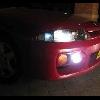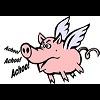Oil Control In Rb's For Circuit Drag Or Drift
Announcements
-
Similar Content
-
Latest Posts
-
Yeah, saw the ratios, not impressed. Would like the punch I have in the first gears now. With those ratios it won't be the same. Also want the h pattern gearing, or at least a quiet gear set that don't need to come apart for service each year. Looks like the only "reasonable" way Is a 8hp70 transmission, but where is the fun in that🤷♂️
-
Hey mate, really appreciate the help. Have been looking pretty extensively myself and was certain they were retro fitted, but then ended up finding a 4 door with what looks like the same side skirts or at least the closest I’ve seen. The photos from the Offset Kings event at Sunrise 2016. https://fatlace.com/offset-kings-okayama-at-sunrise/
-
By joshuaho96 · Posted
Isn't there a PAR engineering gearset that has closer to stock ratios? And they claim they'll do whatever ratios you want. -
And this is the the thing with a high powered, AWD, heavy car. The engine is easy, the driveline costs just as much as the engine. 🤷♂️ Welcome to GTRland. Whatever you think your budget is, double it. Whatever you think your timeline is, triple it.
-
I thought I'd heard rumor of someone that was developing a 6 speed kit to convert the 5 speed box. But maybe I was thinking of the PPG 6 speed sequential? That's about half the price of a car...
-








Recommended Posts
Create an account or sign in to comment
You need to be a member in order to leave a comment
Create an account
Sign up for a new account in our community. It's easy!
Register a new accountSign in
Already have an account? Sign in here.
Sign In Now